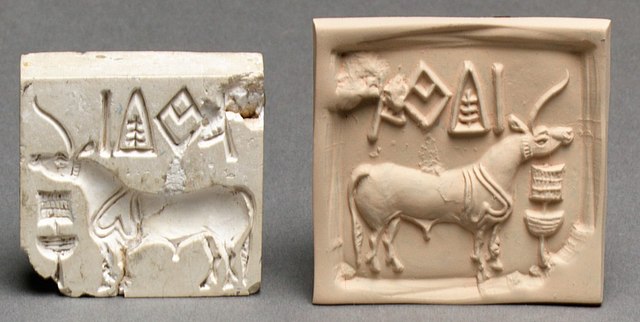Indus Valley Civilization was a prosperous civilization. Big and modern cities of Indus Civilization like Mohenjodaro and Harappa are evidence of the good economic condition of the civilization.
Indus Valley Civilization’s economy was largely based on agriculture and animal husbandry, supplemented by the exploitation of natural and wild resources such as fish.
Archeologists also found pottery, weaving tools, and metals which tell us that there was also trade of these things among other cities. Seals of Harappan civilization were also found in other cities that portray the export from Indus Valley Civilization.
Different Heads of Economic Condition of Indus Valley Civilization
Agriculture
According to Gangal et al. (2014), there is strong archeological and geographical evidence that neolithic farming spread from the Near East into north-west India, but there is also “good evidence for the local domestication of barley and the zebu cattle at Mehrgarh.”
The Indus River Valley was fertile when the Indus civilization flourished there. Vast storehouses to gather food grains, sickles, and other types of agricultural equipment.
Domestication of Animals
Domestication of animals was the second most important occupation. Seals identified, depict that animals were cows, bulls, buffaloes, sheep, goats, camels, etc.
Bones of horses have been found at Lothal, Surkotada, Kalibangan, and some other places.
Hunting
Besides agriculture and domestication of animals, they were also dependant on wild resources.
Besides entertainment, hunting was also a means of sustenance. They also traded the skins, hair, and bones of different animals. Fishing was also admired.
Craft and Metal Works

Indus Valley habitats were skilled. They used to make pottery, metal vessels, tools, and weapons, weaving and spinning, dyeing, and other crafts.
Numerous statuettes on the pots have been excavated. Woodworks including bullock carts and boats were also found.
Wooden Domestic vessels like heaters, store jars, offering stands, etc., were manufactured. Glazing vessels of copper, bronze, silver, and porcelain were also created.
Gold, silver, bronze, and lead were utilized. Most of the pots unearthed were made from copper and bronze.
Trade and Commerce



Seals of Indus Civilizations were also found in different cities of other civilizations. IT shows that they were also involved in Trade and Export.
Precious metals like gold, silver, copper were excavated from Mohenjodaro and Harappa, were exported to foreign countries because till then they were not found here.
Trade of cloth was accomplished with other countries. Particular objects of the Indus Valley
Large granaries, a large number of clay seals, uniform weights, and measurements found in cities like Harappa, Mohenjodaro, and Lothal confirm the view that trade and commerce of Indus Valley civilization were flourishing.


